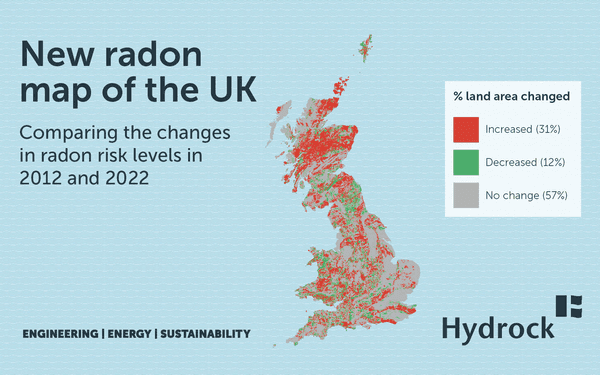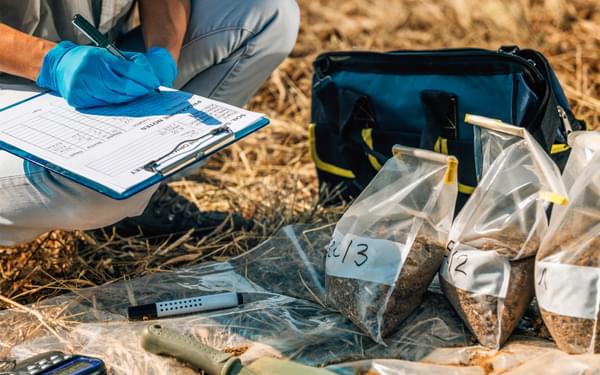
A large group of synthetic chemicals, widely used across the world in many industrial processes, are the latest new contaminants to concern local authorities when approving sites for future development.
In the absence of published assessment criteria for these contaminants in soils, a pragmatic and carefully communicated approach is required to reassure that there is no unacceptable risk to people's health or the wider environment.
PFAS in soil and groundwater
Poly- and per-fluorinated alkyl substances (PFAS) have not traditionally been high on the list of potential contaminants to consider during a site investigation. The general lack of statutory screening criteria in the UK reflects that regulators have paid little attention to them in the past. However, change is in the air, and a lack of established assessment criteria, in particular for soils, could pose a problem in achieving approvals to develop brownfield sites.
PFAS are a large group, upwards of 10,000 individual substances and counting, of synthetic chemicals that are used in a wide-range of industrial processes: creating products from food packaging, to non-stick cookware, sunscreen, cosmetics, waterproofing, through to fire-fighting foam.
They are subject to increasingly stringent regulatory restrictions and prohibitions having been identified by chemical and environmental regulators worldwide as persistent bio-accumulative and toxic substances that could be harmful to human health,
Because of their toxicity and how they behave in soil and groundwater, the tolerable concentrations of these substances in the environment - especially in groundwater and surface water - is incredibly low. Indeed, some compounds require testing to be measured in nanograms per litre. Used in so many manufacturing sectors in modern times, they have risen to prominence and are now widely detected in the environment.
In terms of guidance and regulation, a number of countries are ahead of the UK - in particular, the US, Australia, Canada and parts of Europe. However, various UK industry bodies are working on guidance for the assessment of PFAS compounds in the environment, in addition to ongoing work within the Environment Agency. With soil screening levels currently being developed for the Environment Agency for publication in late summer 2023, greater certainty is on the horizon for the UK.
Taking a pragmatic approach - on-site in south-east England
Site preparation for a large housing development in south-east England, with accompanying green spaces, represents our most recent exposure to testing for PFAS in the ground at scale. Part of this site was a former fire-training area.
Following consultation with the local authority, the requirement for PFAS testing was identified as part of the planning process. This approach would ensure no unacceptable risk to the health of future users of the site given its proposed new use as a public open space.
The overriding concern of regulators is PFAS contamination of groundwater and surface waters that are used directly or indirectly for potable use. However, at this site in the south-east, there is no surface water abstraction close to the site, and the groundwater is very deep. This would make it very expensive to drill multiple deep groundwater wells to test for the contaminant, if indeed PFAS soil contamination is present on site.
Understanding the conceptual site model - the linkages between sources, pathways and receptors - is key and is why we took a pragmatic approach and advocated a phased testing programme.
Sampling quality control is also vitally important, so we have adopted an in-house PFAS-specific sampling protocol, based on international best practice, to ensure the validity of our sampling and testing. This approach was shared with the local authority in advance and received the approval of the regulator.
To tackle this emerging issue, our proposed steps were:
- Initial shallow soil testing at three discrete depths covering areas of the former fire training area to ascertain the lateral and vertical distribution of any contamination
- If no PFAS is identified, there is no requirement for further testing or deep drilling
- If widespread PFAS contamination is identified, we move to a second phase of the testing programme
- A second phase of intrusive investigations will include deeper boreholes to investigate the groundwater, with further testing of identified soil hotspots
In the absence of published UK assessment criteria for soils, we also engaged with the local authority for their buy-in on which of the available international assessment criteria to apply, in the case that PFAS was identified.
Communication is the key
As our experience proved on this major site, in the absence of published UK criteria that assesses the risk of PFAS if identified in soils, engagement and communication with the regulator is key to enabling a development programme to move forward.
Being fully up-to-date on global developments in scientific and regulatory advances in the assessment of PFAS, as well as developments in published guidance within the UK, is also key.
Keeping the regulator updated on the progress of testing, and consulting with them at key milestones is the best solution. It demonstrates care, competence and validation of a testing regime for emerging contaminants such as PFAS, whilst also minimising the impact to the programme of works for the developer.














